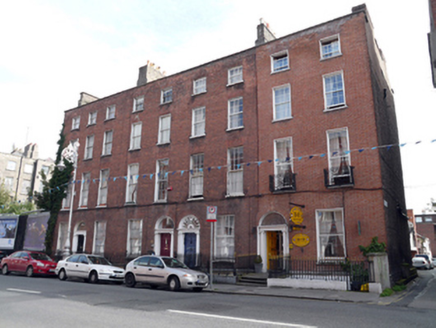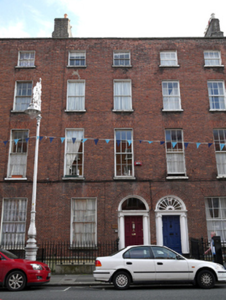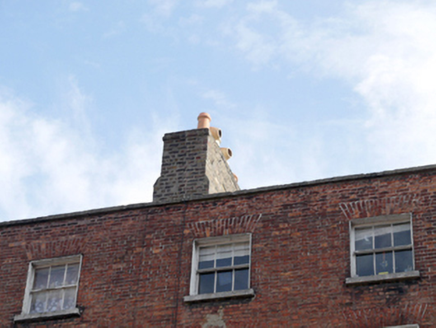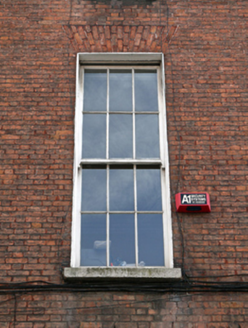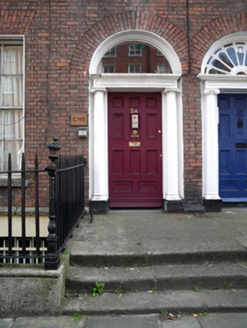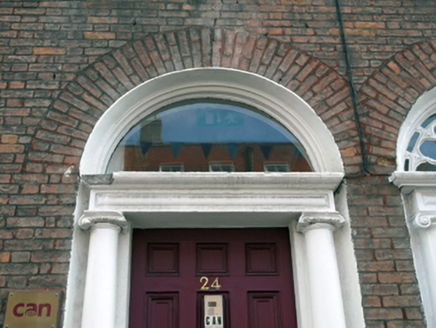Survey Data
Reg No
50010945
Rating
Regional
Categories of Special Interest
Architectural, Artistic
Original Use
House
In Use As
Office
Date
1820 - 1830
Coordinates
315921, 235391
Date Recorded
26/09/2011
Date Updated
--/--/--
Description
Terraced two-bay four-storey house over exposed basement, built c.1825, as one of terrace of four similar houses. Now in multiple occupancy. M-profile roof hidden behind parapet wall with granite coping and two shared stepped brick chimneystacks to east party wall with clay pots. Red brick walls laid in Flemish bond with lime pointing, set on granite plinth course over painted rendered basement. Cement rendered rear elevation with partially exposed east gable to rear pile having yellow brick walls laid in English garden wall bond. Gauged brick flat-arched window openings with granite sills, rendered reveals and replacement timber sliding sash windows throughout, six-over-six pane to ground and first floors, two-over-two pane to second floor and three-over-three pane to top floor. Possibly original eight-over-eight pane timber sliding sash window to basement level with iron grille. Ground floor window noticeably wider than other openings. Single round-headed stair hall window to rear with fanlight. Gauged brick round-headed door opening with inset painted masonry Ionic doorcase. Original timber door with eleven beaded flat panels and brass furniture, flanked by engaged Ionic columns on plinth blocks (volutes to capitals missing) supporting panelled lintel cornice and plain fanlight. Door opens onto granite platform with cast-iron bootscraper and three granite steps bridging basement and shared with No. 25. Platform and basement enclosed by original cast-iron railings and corner posts with painted moulded granite plinth wall to street and matching iron gate giving basement access.
Appraisal
This house is one of a terrace of four similar buildings located at the eastern end of Gardiner Place and laid out by 1792 as an extension to Gardiner’s Row, connecting Parnell Square to Mountjoy Square. This was one of the last terraces to be built on the street. The retention of its classical doorcase, steps, plinth and ironmongery, and the continuing use of timber sash windows building makes this one of the more intact houses in the terrace and plays a significant part in contributing to the intact appearance of both the terrace and the wider streetscape.
